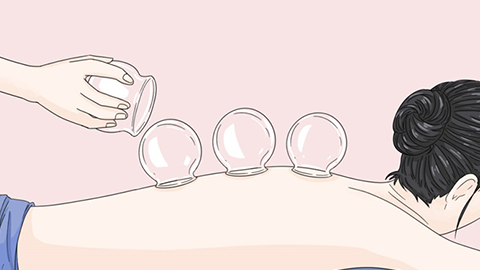Where to perform cupping for removing dampness
Generally, areas commonly selected for cupping to remove dampness include Zusanli (ST36), Guanyuan (CV4), Pishu (BL20), Shenshu (BL23), and Fenglong (ST40). If considering cupping therapy, it is recommended to visit a reputable institution and have the procedure performed by a trained professional. Detailed explanations are as follows:
1. Zusanli (ST36)
Zusanli is located on the lateral side of the lower leg, three cun below the犊鼻 (Dubí) point. This point is a key acupoint of the stomach meridian; cupping here can regulate the functions of the spleen and stomach, enhance transformation and transportation, aid in eliminating dampness from the body, and alleviate symptoms such as abdominal distension and loss of appetite caused by excessive dampness. It is particularly suitable for individuals with spleen deficiency accompanied by excessive dampness.
2. Guanyuan (CV4)
Guanyuan is located three cun below the navel and belongs to a point on the Conception Vessel. Cupping at this location can warm and replenish vital energy, dispel cold, and remove dampness. It can help relieve symptoms such as heaviness in the limbs and intolerance to cold caused by internal accumulation of cold-damp. It is especially suitable for individuals with a cold constitution accompanied by excessive dampness.

3. Pishu (BL20)
Pishu is located on the back, below the spinous process of the 11th thoracic vertebra, 1.5 cun lateral to the midline. As the back-shu point of the spleen, cupping at this point can enhance the spleen's function of transforming and transporting bodily fluids and reduce accumulation of dampness in the body. It is commonly used to improve conditions such as loose stools and a heavy sensation in the body caused by dampness.
4. Shenshu (BL23)
Shenshu is located on the lower back, below the spinous process of the second lumbar vertebra, 1.5 cun lateral to the midline. Cupping at this point can warm and strengthen kidney yang. Sufficient kidney yang promotes fluid metabolism and helps eliminate dampness from the body. It is effective in managing conditions such as edema and soreness or weakness of the lower back and knees caused by kidney yang deficiency and internal accumulation of dampness.
5. Fenglong (ST40)
Fenglong is located on the anterior-lateral side of the lower leg, eight cun above the tip of the external malleolus. This acupoint is a key point for resolving phlegm and eliminating dampness. Cupping here can promote circulation of the meridians, improve transformation and transportation of bodily fluids, and effectively alleviate symptoms such as dizziness, heaviness in the body, coughing, and excessive phlegm caused by phlegm-damp.
When performing cupping, it is important to choose appropriate cups and apply suitable suction to avoid skin damage caused by excessive duration. Cupping should not be performed on skin with wounds, ulcers, or allergies. After cupping, keep the body warm, avoid exposure to cold drafts, and refrain from showering for 24 hours to prevent invasion of dampness. If symptoms such as redness, swelling, blisters, or other discomfort occur after cupping, prompt treatment and consultation with a qualified practitioner are advised.





